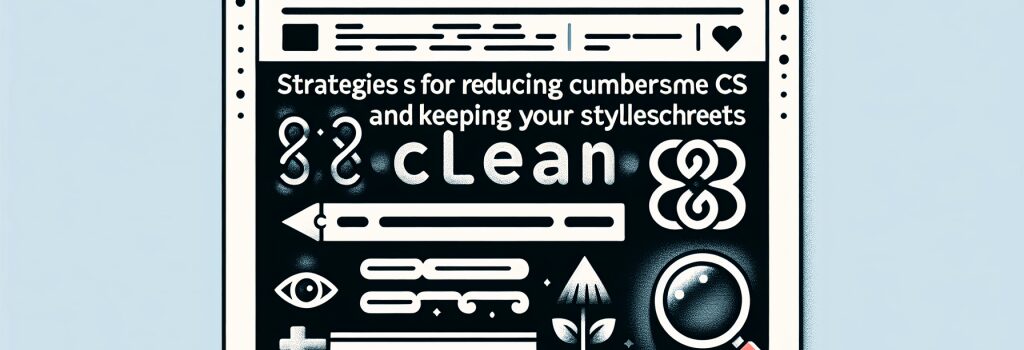Strategies for Reducing Cumbersome CSS and Keeping Your Stylesheets Clean

Having a clean, manageable CSS file is imperative to a sleek web development process. Many aspiring web developers find themselves lost within heaps of CSS codes that get more difficult to manage with growing complexity. Following a set of effective strategies aids in reducing cumbersome CSS and retains clean stylesheets, thereby offering smooth web development with clean coding.
Understand the CSS Structure
Understanding the arrangement of your CSS file is crucial. Break your CSS code into sections relating to the parts of the site they style. For instance, divide your stylesheet into global styles, header styles, forms, and footers. This division enables easy navigation within your CSS file, enhancing its readability.
Selectors
Selectors form the cornerstone of styling web elements. Starting with basic tags such as ‘p’ for paragraph and ‘div’ for division, learning the advanced selectors can empower you to style web elements more efficiently.
Don’t over-complicate the selectors. Keep in mind that every rightward movement in a CSS selector increases the specificity making the code difficult to override.
Leverage CSS Shorthand Properties
Shorthand properties are a powerful way to write compact CSS. They allow you to set the properties of several aspects in a single line. For instance, you can define all the font-related properties in one line instead of writing individual properties separately. It increases efficiency and cleanliness of your stylesheets.
Commenting
Invest time in commenting on your CSS. It won’t necessarily make your CSS leaner in terms of code, but it will make it far more manageable and clean. Adding comments describing what each part of the stylesheet does, especially if you are working in a team or the code will be reviewed by others, makes a huge difference.
Use a CSS Preprocessor
Utilizing a CSS preprocessor like Sass or Less is a practical way to retain stylesheets’ cleanliness. Preprocessors offer great features like variables and mixins to reuse CSS, nested syntax to avoid repetition of selectors, and mathematical functions to perform calculations, thus making your CSS less cumbersome.
Opt for a Modular Approach
In a modular approach, common components like buttons or navigation bars are stylized as one module, making the code reusable and easier to maintain.
Break down the components based on functionality and style each separately. Utilize the concept of Object-Oriented CSS (OOCSS), which helps in avoiding repetition and promoting reusability.
Use CSS Frameworks
CSS Frameworks like Bootstrap or Tailwind CSS offer pre-written CSS that you can use to build responsive web development quicker. These frameworks follow best practices in writing CSS, ensuring your stylesheets remain clean and less cumbersome.
Optimize and Minify CSS
Optimize your CSS along the way by eliminating the unused CSS and minifying it to reduce the file size. There are several online tools available that can be used to achieve this.
In conclusion, writing clean CSS is an ongoing process. As you dive deeper into web development, you will continually learn new strategies to reduce cumbersome CSS coding and optimize your stylesheets. For now, adhering to these strategies will cultivate excellent coding habits, contributing significantly to your journey from aspiring to a proficient web developer. Happy Coding!


